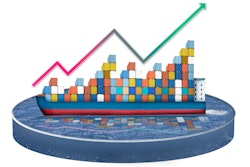
As supply chains extend globally, they become more complex. The flow of supplies, finished goods and information are widely distributed, presenting significant challenges across a manufacturer’s entire supply chain network. For success, companies need to gain visibility into this complex network of customers, suppliers and logistics providers to collectively sense and properly respond to changes in supply and demand. In other words, they need a demand-driven supply chain.
Traditional supply chains focus on pull techniques, pulling supplies from suppliers to produce products based on lead times and the demand forecast. If there is a change in the actual demand from the forecast, supply levels need to be adjusted. If there is a lag time between when demand changes and when it is detected along the supply chain, there can be inventory shortages or excesses.
Demand-driven supply chains help to mitigate this effect on inventory by being driven by customer demand. They are built from the outside-in to focus on the customer and to respond directly to external market drivers. This allows companies to focus more on sensing, shaping and driving an intelligent response to the environment happening outside their internal control.
These supply chains require a collaborative network where commerce is digitized and flows across buyers, suppliers and logistics providers. With the ability to sense and properly respond to events across the network, inventory levels are optimized, costs are reduced and customer service levels are met.
Rapid responses and clear visibility into the supply chain are required for a successful demand-driven supply chain. For example, excess raw material stocks held at a time of falling raw material prices incur huge losses, putting a manufacturer at a disadvantage of higher costs compared to a competitor. Alternatively, too low a raw material stock, at a time of increasing demand can leave supply shortages, causing an inability to manufacture sufficient product, which can lead to out-of-stocks and customer dissatisfaction.
End-to-End Supply Chain Visibility
End-to-end supply chain visibility is a key tool needed within the demand-driven supply chain. Companies need visibility from their supplier’s dock through to their customer’s door to gain insight into what is happening and where customers’ orders are. True visibility is where the customer, having placed the work order, can receive confirmed acceptance from motor carriers, appointment times and actual delivery times.
Visibility encompasses not only sensing data, but also how to analyze it and take appropriate action across the extended enterprise. A supply chain business network allows collaboration and communication between internal and external trading partners, and gives visibility to activities up and down the supply chain. Significant benefits are gained from this end-to-end visibility, such as higher order fulfillment rates, improved customer service levels, higher profitability, increased operational efficiency, and higher revenue growth.
The Pulse on the Supply Chain
As a business network captures event and transaction data across the entire network, it creates a critical mass of historical business information that can be used in predictive analytics. For example, if a carrier promises next-day delivery, predictive analytics would make a more accurate prediction of delivery, alerting users of a high probability of late delivery.
The application layer operates on the transactions between trading partners on the business network. All the data is stored in an accessible way that can bring in outside data feeds like economic data, GNP forecasts, weather forecasts, risk events, etc. Then information can be pulled together and presented to management to deliver the type of game-changing analytics that illuminates the meaning behind the data.
With end-to-end visibility of a demand-driven supply chain, businesses will be able to respond quicker to demand changes and will be better positioned to beat the competition. Using a business network that offers collaboration and visibility capabilities helps companies to experience better on-time performance, reduce variability in lead times and free up working capital.













